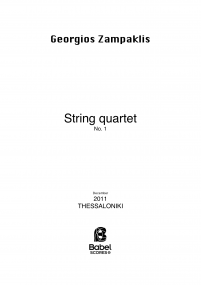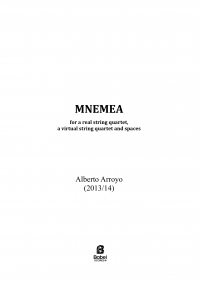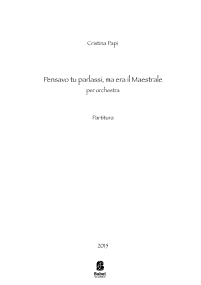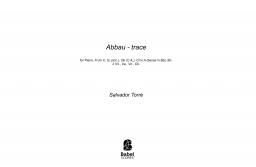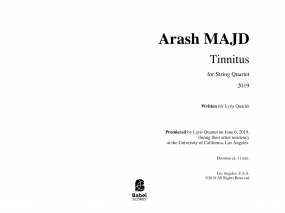String Quartet N°2
10,30 €
Digital version (+0,00 €) instant download
Printed format (+14,80 € printing and shipping). Colissimo7-14 days aprox.
When you buy a score, you can contact the composer right here!
Specifications
Region
North America (Canada - USA)
Estimated Duration
16 - 20min
Date
2006
ISMN : 979-0-2325-1413-0
In Stock
Notes on this piece
String Quartet N°2
Rooted in a precise tuning of the instruments, the piece alternates between two different sound worlds. Each section draws its material from different sources but they both depend on this extended Pythagorean tuning. The sections where the strings only play stopped notes make use some of the Turkish makams and Byzantine genera. Since the scordatura creates new intonation problems, especially with equal-tempered intervals, these passages also amplify the frustration of finding the “correct” pitch. In the other sections, the strings play exclusively on natural harmonics and open strings. The sonority, which plays a central role in these parts, is the overtone chord. The Pythagorean tuning makes the overtone chord in all 12 pitches possible. These parts often drift off from one chord to another in different textures.The piece is divided into seven sections. Since they all connect with first violin’s high E, they can ideally be played in any order. For a continuous feel, sections of the same sound world can be played consecutively. Alternatively, a heterogeneous mixture of these sections would yield a more fragmented experience.
Add to a playlist
- Login to create your own lists
String Quartet N°2
Rooted in a precise tuning of the instruments, the piece alternates between two different sound worlds. Each section draws its material from different sources but they both depend on this extended Pythagorean tuning. The sections where the strings only play stopped notes make use some of the Turkish makams and Byzantine genera. Since the scordatura creates new intonation problems, especially with equal-tempered intervals, these passages also amplify the frustration of finding the “correct” pitch. In the other sections, the strings play exclusively on natural harmonics and open strings. The sonority, which plays a central role in these parts, is the overtone chord. The Pythagorean tuning makes the overtone chord in all 12 pitches possible. These parts often drift off from one chord to another in different textures.The piece is divided into seven sections. Since they all connect with first violin’s high E, they can ideally be played in any order. For a continuous feel, sections of the same sound world can be played consecutively. Alternatively, a heterogeneous mixture of these sections would yield a more fragmented experience.
Instrumentation
Violin (2)|Viola|Cello|
Recording
Ying Quartet
Score Details
Format - A4 / US Letter
Pages - 36
Pages - 36





